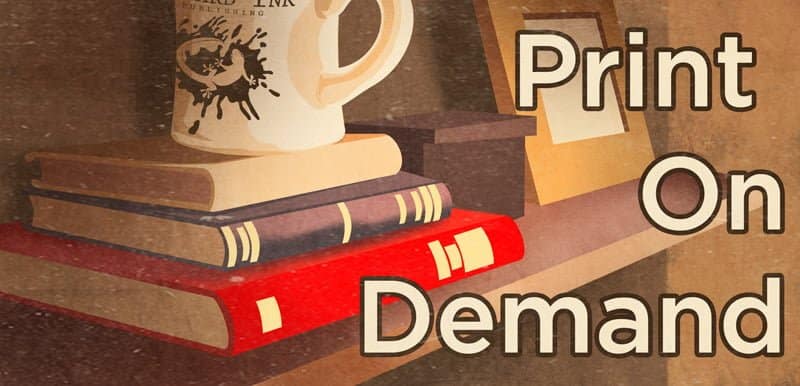Book Publishing on Demand Technology
In many ways, the technology to make self-publishing truly viable has only become a reality in the last ten years. Book publishing on demand technology is one of the major advances that has really made this possible. One problem for self-publishers was always the risk involved in committing to a print run for a book that might only have a small market. Costs for printing, storage, and holding an inventory can add up quickly, which is part of why traditional publishers need to be certain there is a market for a book before committing to publish it.
Before Print on Demand
Before print on demand, offset printers would receive camera-ready, typeset galleys from the typographer – or later, a digital file – and from that would prepare a printer’s plate from which the printing would be done. Preparing these plates was called “makeready,” and there was a cost associated with it.
Color printing, as for children’s books or coffee-table books, required “color separation,” or the separation of colors into black, magenta, cyan, and yellow inks in a way that would reproduce color faithfully. Later technology made the creation of physical plates obsolete, but makeready work, including the problems of matching colors on press, remain expensive.
Offset Printing
Offset printing requires a minimum number of copies to make a “print run” worth the cost – usually a number in the thousands. A few years ago, a typical minimum number for a print run to be worth its cost would be around 2500 copies, but this number can vary significantly based on use of color, type of paper, and other specifications.
When figuring the economics of a print run, printers will tell you the per-copy cost, which drops significantly in offset printing with higher quantities. Print on demand enjoys less of a reduction in cost as the number of copies grows, so at some point print on demand loses its cost-saving appeal – but if you’re selling enough to require print runs that large, you probably want to go out and celebrate!
Low Quantity Book Printing
Before you become a best-selling author, though, you may have a need or desire to print a small number of copies, possibly for your friends and family, possibly for a local bookstore, or possibly because you are only selling just a few print copies, and most of your market is digital. How can you accommodate smaller print runs for your self-published book?
How Book Publishing on Demand Works
Print on demand is a relatively recent technology approach that can revolutionize the publishing process for self-publishers and small presses, and change the way you look at producing your book. Made possible largely by the advent of digital printing technology and newer printing methods, like high-end laser printers, print on demand allows you to order small quantities of books in response to demand – even a single book in response to an order. By producing only the exact amount needed, you save money and lower your risk factor significantly.
Most book publishing on demand suppliers don’t have a minimum order requirement, which allows you to test-market your book before committing to a larger run.
Even better, when the print job is complete, digital files of the book, including the cover, are stored and can be used to print and ship the next order – whether direct to your customer or as requested by a bookstore. Many print on demand suppliers will take care of the shipping of the final product for you as well!
Book Publishing on Demand Advantages
There are a number of advantages to this approach for small publishers and self-publishing authors. With no stock held of the book, there are no bulk, up-front printing costs, and no costs for storage or inventory accounting. Once the cover and manuscript are uploaded, your book can be ready to be sold anywhere in the world. Print on demand is more environmentally friendly, since printing and shipping is only needed for each actual sale, and there is virtually no waste from unsold products.
Print on demand also allows you to easily make changes to the text, formatting, or design at any time. Errors can be corrected and permanently incorporated into the digital file.
Book Publishing on Demand Providers
Two of the biggest providers of print on demand services are Lulu.com and CreateSpace, owned by Amazon. Lulu has been operating since 2002, offering tools to publish both print and ebooks, and distribution to a network of online bookstores. CreateSpace will make your book available on Amazon, and Kindle, as well as your own estore.
Ingram Spark is another favorite for self-publishers, with a large distribution network including 39,000 bookstores. Be aware, however, that not all bookstores will order from POD printers. Costco, for example, does not order from CreateSpace.
At Izzard Ink, we work with many different print on demand companies, and have experts on hand to ensure a professional final product and are able to print the book size you want.
Is a Press Run Necessary?
Print on demand is one way to avoid the problems that have forced authors to rely on large, traditional publishers for decades, allowing for you to work as a truly independent self-publishing author. Instead of allocating as much as $5,000 to $10,000 dollars for a press run, that money can go towards your book’s production to guarantee a high-quality product. Thanks to the internet, using these services will give your book global reach, while you maintain the control and benefits of independent self-publishing.




